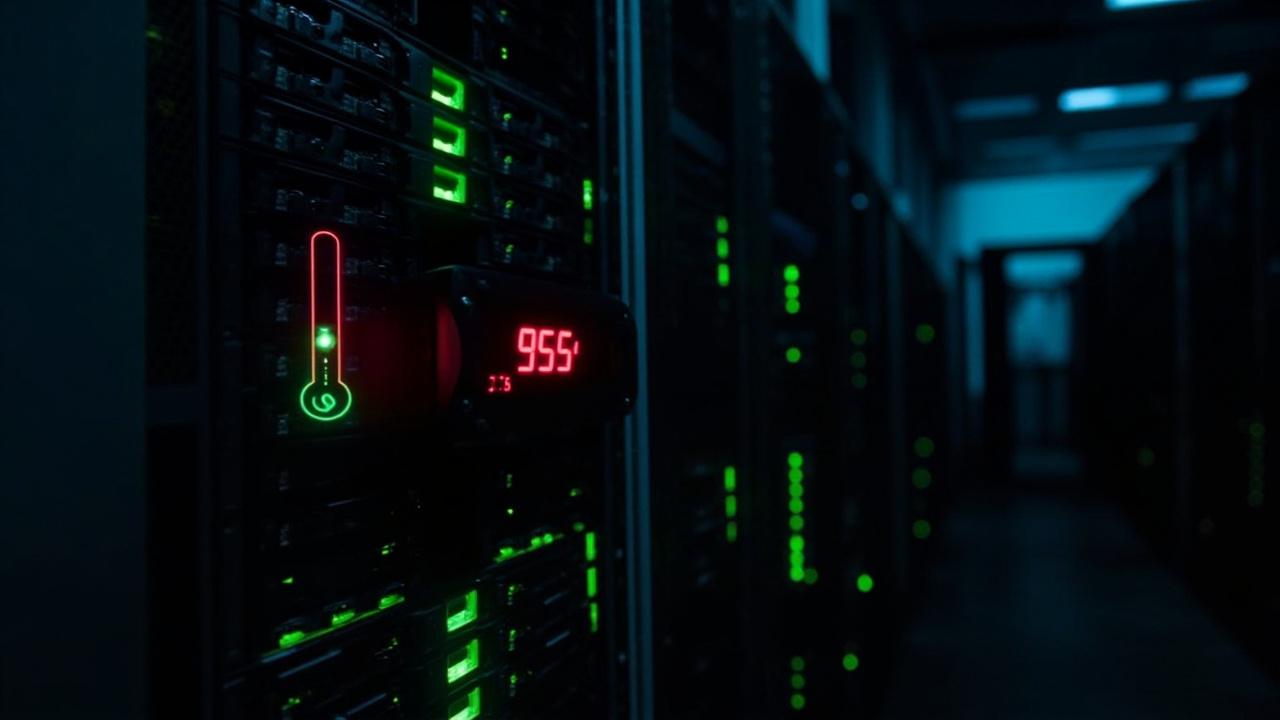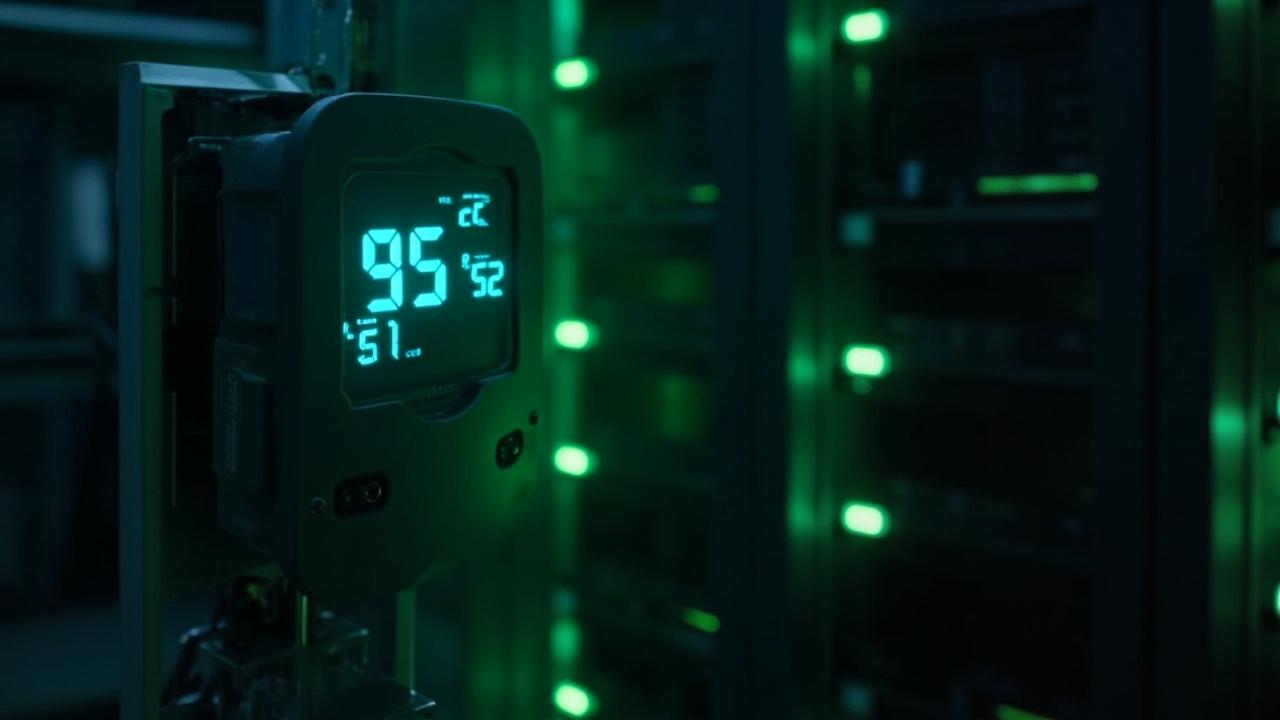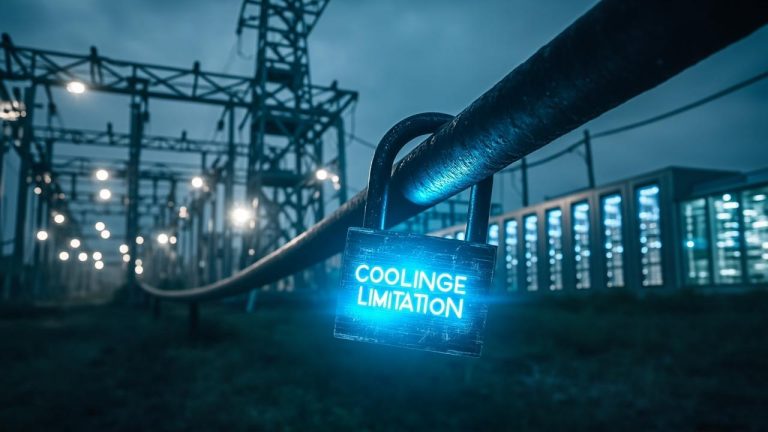Introduction
High temp data centers are a growing trend, offering significant operational expense savings. Data centers, the backbone of our digital world, consume an estimated X% of global electricity, translating to billions of dollars in annual energy costs. This staggering figure underscores the urgent need for more efficient and sustainable data center operations. But what if we could drastically reduce these costs, not through complex technological overhauls, but with a fundamental shift in how we perceive and manage temperature?
The conventional wisdom of keeping data centers at near-arctic temperatures is increasingly being challenged. This decades-old approach, reliant on aggressive air conditioning and energy-intensive cooling systems, is proving to be both environmentally damaging and financially unsustainable. A new paradigm is emerging – one that embraces the heat, challenging the notion that servers and hardware require perpetually chilled environments to function optimally. This shift involves running data centers at higher, yet still safe and manageable, temperatures.
Running data centers at higher temperatures offers a viable and increasingly necessary strategy for reducing operational expenses, boosting efficiency, and improving sustainability without compromising performance or reliability. By understanding the thermal capabilities of modern hardware, optimizing airflow management, and implementing intelligent monitoring systems, data centers can unlock significant cost savings, reduce their carbon footprint, and pave the way for a more sustainable future.
This approach isn’t just about saving money; it’s about future-proofing data center operations for a world increasingly focused on energy efficiency and environmental responsibility.
The Problem With Traditional Data Center Cooling
Traditional data center cooling methods rely heavily on energy-intensive systems like powerful air conditioners and complex chiller setups. These systems are designed to maintain a consistently low temperature, often far below what modern IT equipment actually requires. This “overcooling” represents a significant source of wasted energy and contributes to a data center’s inflated operational expenses.
A primary issue stems from the fact that these systems cool the entire data center space, rather than targeting the heat generated directly by the servers. This leads to inefficient heat transfer and requires substantially more energy to achieve the desired temperature.
The energy inefficiencies of traditional cooling translate directly into a high Power Usage Effectiveness (PUE) rating. PUE is a metric that measures the ratio of total energy used by a data center to the energy used by the IT equipment. An ideal PUE is 1.0, meaning all energy is used for computing.
However, data centers using traditional cooling methods often have PUEs much higher than this, indicating a significant portion of energy is being consumed by the cooling infrastructure. This results in higher electricity bills and increased maintenance costs associated with the complex cooling equipment. Furthermore, the reliance on older cooling technologies often requires specialized personnel for maintenance and repairs, adding to the overall operational burden.
Beyond the financial implications, traditional data center cooling has a considerable environmental impact. The massive energy consumption associated with these systems contributes significantly to the carbon footprint of the IT industry. The electricity used to power the cooling equipment often comes from fossil fuel-based power plants, leading to greenhouse gas emissions.
As concerns about climate change grow, data centers are facing increasing pressure to reduce their environmental impact and adopt more sustainable practices. Sticking with old methods of cooling makes it increasingly difficult to leverage technologies such as high temp data centers for different applications, and places a strain on outdated systems. Data centers may also face potential environmental penalties and regulations if they fail to meet sustainability standards.
Here are some specific inefficiencies of traditional cooling systems:
The Science of Higher Temperatures
The long-held belief that data centers must be kept at near-freezing temperatures is quickly becoming a relic of the past. While older server generations certainly benefited from cooler environments, modern hardware is designed with far greater thermal tolerance in mind.
The American Society of Heating, Refrigerating and Air-Conditioning Engineers (ASHRAE) has played a crucial role in redefining these standards, publishing updated guidelines that allow for significantly higher operating temperatures than previously considered acceptable. These guidelines reflect the advancements in server design and materials science, allowing data centers to operate more efficiently without jeopardizing equipment reliability.
A key aspect of understanding thermal limits is recognizing the built-in safety mechanisms within modern servers. Thermal throttling, for example, is a common feature that automatically reduces CPU clock speeds when temperatures exceed a certain threshold. This prevents overheating and potential damage, ensuring the server continues to operate safely, albeit at a slightly reduced performance level.
Furthermore, manufacturers conduct extensive testing to validate the operating temperature ranges of their equipment. These tests simulate real-world conditions and provide data on component lifespan and failure rates at various temperatures. The results of these tests often demonstrate that modern servers can comfortably operate at temperatures well above what was traditionally considered safe, opening up new possibilities for optimizing cooling strategies and leveraging benefits from high temp data centers.
It’s important to note that while modern servers are more tolerant of higher temperatures, careful monitoring and management are still crucial. Data centers need robust systems in place to track temperature fluctuations, identify potential hotspots, and respond quickly to any anomalies.
This includes implementing advanced monitoring tools, establishing clear escalation procedures, and providing ongoing training for data center personnel. By taking a proactive approach to thermal management, data centers can confidently push the boundaries of operating temperatures while maintaining the reliability and availability of their critical infrastructure.
| Aspect | Details |
|---|---|
| ASHRAE Guidelines | Define acceptable temperature ranges for data center operations. |
| Thermal Throttling | Automatic reduction of CPU clock speed to prevent overheating. |
| Manufacturer Testing | Validation of equipment lifespan and failure rates at various temperatures. |
| Monitoring Systems | Track temperature fluctuations and identify hotspots. |
Unlocking OPEX Savings
The potential for significant cost reduction is a primary driver for data centers considering higher operating temperatures. By decreasing the reliance on traditional cooling methods, facilities can realize substantial savings across several key areas. The most obvious is a reduction in electricity consumption. Cooling infrastructure, such as chillers and air conditioners, are energy-intensive and contribute significantly to a data center’s overall power bill. Running hotter translates directly into less cooling required, and thus lower energy bills.

Consider the following scenarios and areas of savings:
One example is a data center that successfully implemented a hot aisle/cold aisle containment strategy and gradually increased its operating temperature to the upper range of ASHRAE’s recommendations. As a result, they reduced their cooling energy consumption by 30% and achieved an overall PUE of 1.3.
Furthermore, many government entities offer incentives and rebates for energy-efficient data center operations, further sweetening the deal for facilities willing to embrace higher temperatures. These incentives can range from tax credits to direct funding for energy-saving projects.
Finally, the increased effectiveness of free cooling at higher temperatures is a game-changer. Free cooling, which utilizes outside air to cool the data center, becomes a much more viable option when the temperature differential between the outside air and the desired data center temperature is smaller.
This can significantly reduce or even eliminate the need for mechanical cooling during certain times of the year, leading to even greater energy savings. This helps to make *high temp data centers* very attractive to operators.
Strategies for Successful Implementation
A successful transition to higher operating temperatures in data centers requires a multifaceted approach, focusing on careful planning, precise execution, and continuous monitoring. It’s not simply about turning up the thermostat; it’s about optimizing the entire data center ecosystem to thrive in a warmer environment. One of the first steps to take involves implementing effective airflow management techniques.
Airflow Management and Containment
One of the most fundamental strategies is implementing effective airflow management techniques. Traditional data centers often suffer from hot air recirculation, where exhaust heat from servers is drawn back into the intake, creating hotspots and negating the effects of cooling systems. Hot aisle/cold aisle containment is a proven method to combat this.
By physically separating hot and cold air streams, you ensure that servers are consistently drawing in cool air, preventing overheating. Blanking panels are also crucial; they fill empty spaces in server racks, preventing hot air from leaking into the cold aisles. Proper rack placement also contributes significantly; ensuring adequate spacing and alignment optimizes airflow and prevents localized heat buildup.
Monitoring, Management, and Incremental Changes
Sophisticated monitoring and management systems are paramount for maintaining stable operations in high-temperature environments. Real-time temperature sensors placed strategically throughout the data center provide valuable insights into thermal conditions, allowing for proactive adjustments to cooling systems. Anomaly detection algorithms can identify unusual temperature spikes or drops, alerting administrators to potential problems before they escalate. It’s crucial to adopt a gradual approach when increasing temperatures.
Abrupt changes can shock the system and potentially damage sensitive hardware. Instead, increase the temperature incrementally, closely monitoring the impact on server performance and stability. This allows you to fine-tune your cooling strategy and identify any potential issues early on.
Redundancy, Prediction, and Documentation
Robust backup cooling systems and failover protocols are essential safeguards. In the event of a primary cooling system failure, a redundant system should automatically take over to prevent downtime and potential damage. Predictive modeling and simulation can play a valuable role in optimizing temperature profiles. By creating virtual models of your data center, you can simulate different operating scenarios and identify potential hotspots or airflow bottlenecks before they become real-world problems.
Finally, detailed documentation and change management are crucial. Keep meticulous records of all changes made to the cooling system, server configurations, and temperature settings. This provides a valuable audit trail and facilitates troubleshooting in the event of problems. Detailed documentation is extremely important as teams adopt the approach and methods to operate these high temp data centers.
The Role of Innovation
As data centers evolve to meet ever-increasing demands while simultaneously striving for greater energy efficiency, innovation is playing a crucial role in enabling successful high-temperature operations. Traditional cooling methods are increasingly being replaced by cutting-edge technologies designed to thrive in warmer environments and minimize energy waste. These advancements are not just about adapting to higher temperatures; they’re about optimizing performance and sustainability in the face of growing computational needs.
Alternative Cooling Technologies
One of the most promising areas of innovation is in alternative cooling technologies. Liquid cooling, for instance, offers superior heat transfer compared to air cooling. Direct-to-chip liquid cooling, where coolant flows directly over the processors and other heat-generating components, allows for much higher heat removal rates and enables servers to operate at significantly higher temperatures.
Immersion cooling takes this concept a step further by submerging entire servers in a dielectric fluid, providing even more efficient and uniform cooling. These technologies are particularly well-suited for high-density computing environments and can significantly reduce the energy required for cooling, even allowing the waste heat to be reused for other purposes like heating nearby buildings.
AI-Powered Optimization and Advanced Hardware
Artificial intelligence (AI) and machine learning (ML) are also revolutionizing data center cooling. AI-powered systems can analyze real-time data from sensors throughout the data center to dynamically adjust cooling parameters, optimizing airflow, temperature, and humidity levels based on actual workload demands. This allows for precise control and eliminates the inefficiencies of static cooling configurations.
Furthermore, advancements in server hardware are making high temp data centers a reality. Manufacturers are designing components that are more tolerant of higher temperatures and incorporate features like adaptive frequency scaling and power management to minimize heat generation. The convergence of these hardware and software innovations is paving the way for a new generation of highly efficient and resilient data centers.
Renewable Energy Integration and Purpose-Built Deployments
Finally, the integration of renewable energy sources is becoming increasingly important for sustainable data center operations. By powering cooling systems with solar, wind, or other renewable energy sources, data centers can significantly reduce their carbon footprint and reliance on fossil fuels. This is particularly relevant for data centers located in regions with abundant renewable energy resources.

This is leading to high temp data centers being purpose-built for new applications in edge or special deployments. This might mean the ability to build more specialized racks or denser deployments, all while reaping the benefits of lower operational expenses in energy and cooling. The development of new cooling technologies, AI-powered optimization, and the adoption of renewable energy are all contributing to a more sustainable and cost-effective future for data center cooling.
Addressing Common Concerns and Misconceptions
One of the biggest hurdles in adopting higher temperature data center operations is overcoming ingrained fears and misconceptions. Many IT professionals are understandably wary of deviating from traditional cooling practices, fearing catastrophic equipment failure or voiding warranties. The persistent thought is that servers need to be kept at near-freezing temperatures, reminiscent of the early days of computing. This leads to questions like: “Won’t my servers overheat and crash?
“, “Will operating at higher temperatures void my hardware warranties? “, and “Is this approach genuinely safe and reliable in the long run?”. These are valid questions that require careful consideration and evidence-based answers.
The reality is that modern server hardware is far more resilient than many believe. Manufacturers design servers to operate within a specified temperature range, often much higher than the temperatures commonly maintained in traditional data centers. ASHRAE, the American Society of Heating, Refrigerating and Air-Conditioning Engineers, provides detailed guidelines for recommended and allowable temperature ranges within data centers.
Sticking within these guidelines, even at the higher end, typically doesn’t void warranties and ensures reliable operation. Furthermore, modern servers are equipped with thermal throttling mechanisms that automatically reduce performance to prevent overheating, providing an added layer of protection. This, along with careful airflow management, ensures that even in high temp data centers, the equipment can continue operating without issues.
To further alleviate concerns, it’s crucial to showcase success stories from data centers that have already made the transition to higher temperature operations. Sharing testimonials and case studies demonstrating the tangible benefits and lack of negative impacts can be highly persuasive. Highlighting risk mitigation strategies and contingency planning is also essential.
This includes implementing robust monitoring systems to detect temperature anomalies, establishing backup cooling systems for emergencies, and developing well-defined failover protocols. Regular maintenance and monitoring are key to preventing problems and ensuring the continued smooth operation of the data center, regardless of the operating temperature.
| Concern | Evidence-Based Rebuttal |
|---|---|
| Servers will overheat | Modern servers are designed to operate within ASHRAE-specified temperature ranges, with thermal throttling for protection. |
| Warranties will be voided | Operating within manufacturer-specified temperature ranges, as defined by ASHRAE, typically does not void warranties. |
| It’s not safe/reliable | Success stories demonstrate the reliability of higher temperature operations, supported by risk mitigation strategies and monitoring. |
The Future of Data Center Cooling
The shift toward running data centers at higher temperatures represents a pivotal moment in the evolution of computing infrastructure. By challenging conventional wisdom and embracing innovative approaches to thermal management, we can unlock significant cost savings, reduce our environmental footprint, and pave the way for a more sustainable future. The journey requires a willingness to adapt, learn, and collaborate, but the potential rewards are too significant to ignore.
As the demand for computing power continues to surge, the energy consumption of data centers will only become a more pressing concern. Embracing higher operating temperatures, combined with advancements in cooling technologies and intelligent management systems, offers a powerful strategy for mitigating this challenge.
This involves not only adopting new technologies but also fostering a culture of continuous improvement and knowledge sharing within the data center industry. By working together, we can accelerate the adoption of best practices and drive innovation in sustainable data center operations.
Ultimately, the move towards running hotter is not just about saving money; it’s about building a more responsible and resilient digital infrastructure. By optimizing energy consumption and minimizing environmental impact, we can ensure that the benefits of technology are accessible to all, without compromising the health of our planet.
The future of data center cooling lies in embracing innovation, fostering collaboration, and prioritizing sustainability in all aspects of design and operation, including purpose-built high temp data centers for new applications.
Frequently Asked Questions
What are the typical operating temperature ranges considered ‘high’ for data centers?
Data centers typically consider operating temperatures above 80°F (27°C) as being on the higher end. While there isn’t a single universally agreed-upon “high” threshold, exceeding this range often prompts increased scrutiny of cooling systems and potential risks to equipment performance and longevity. Going significantly beyond this can create instability and trigger emergency protocols.
What are the potential benefits of operating a data center at higher temperatures?
Operating a data center at slightly higher temperatures can lead to energy savings through reduced cooling demands. By decreasing the workload on cooling systems like chillers and air conditioners, the data center consumes less electricity. This reduction in energy consumption translates directly into lower operating costs and a reduced carbon footprint for the facility.
What are the risks and challenges associated with running a data center at high temperatures?
Running a data center at elevated temperatures presents several risks, including reduced component lifespan and increased failure rates of IT equipment. Overheating can also lead to performance degradation, causing slowdowns and errors in processing. Maintaining stability and preventing hotspots requires careful monitoring and advanced cooling strategies.
What cooling technologies are specifically designed or adapted for high-temperature data centers?
Several cooling technologies are well-suited for high-temperature data centers, including liquid cooling systems that directly cool components like CPUs and GPUs. Free cooling, which uses outside air when ambient temperatures are suitable, is another effective method. Additionally, advanced air management techniques, such as hot aisle/cold aisle containment, optimize airflow and improve cooling efficiency.
How does operating at higher temperatures impact the lifespan and reliability of IT equipment in a data center?
Higher operating temperatures generally shorten the lifespan and reduce the reliability of IT equipment within a data center. Excessive heat accelerates the degradation of electronic components, leading to premature failures. This can result in increased downtime, higher maintenance costs, and the need for more frequent equipment replacements.




